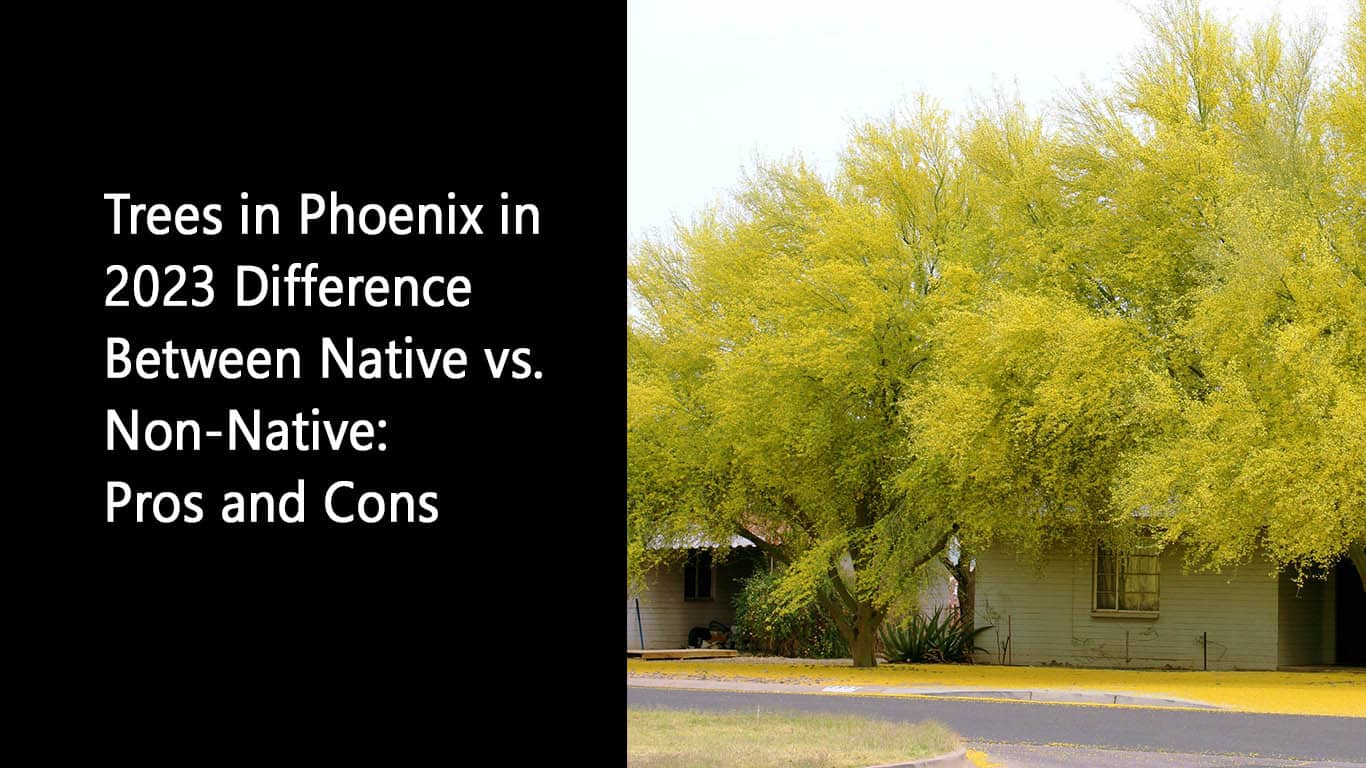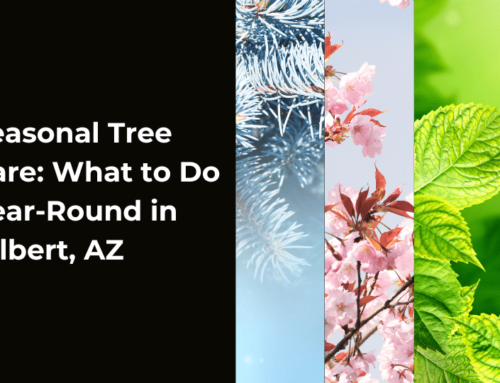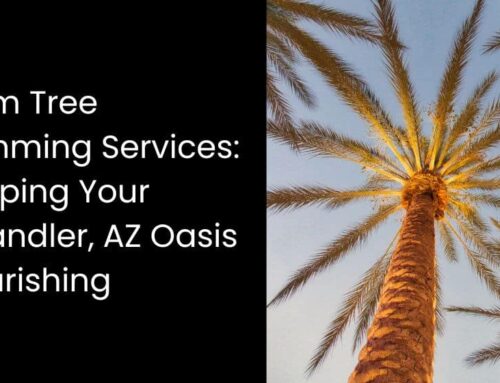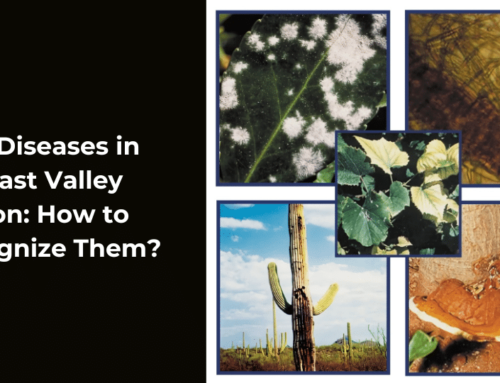
Landscaping with trees in Phoenix is a deliberate and often challenging choice. With the arid climate, deciding between native and non-native trees requires careful consideration. In this blog post, we’ll explore the pros and cons of both native and non-native trees for your Phoenix landscape in 2023. This article will hopefully help you make an informed decision.
Native Trees in Phoenix
Pros of Planting Native Trees:
- Adapted to the Environment: Native trees have evolved to thrive in the specific conditions of the Phoenix area. They are well-suited to the extreme temperatures and low rainfall, requiring less maintenance once established.
- Wildlife Attraction: Native trees can attract local wildlife, which can contribute to a more vibrant and diverse ecosystem in your landscape.
- Water Efficiency: Native trees typically require less water. Once they are established, native species can contribute to water conservation in your landscape.
Cons of Planting Native Trees:
- Limited Variety: The selection of native trees may be limited compared to non-native species, which can restrict your landscaping options.
- Slower Growth: Some native trees grow more slowly than non-native species, which may require patience as your landscape develops.
- Disease Susceptibility: While adapted to local conditions, native trees can still be susceptible to local pests and diseases. Hence, requiring the need for tree care.
Non-Native Trees in Phoenix
Pros of Planting Non-Native Trees:
- Aesthetic Variety: Non-native trees offer a wide range of colors, shapes, and sizes, allowing for diverse and visually appealing landscaping.
- Fast Growth: Some non-native trees grow more quickly, providing faster results and shade for your landscape.
- Climate Adaptability: Some non-native trees can adapt to Phoenix’s climate with proper care and maintenance, allowing for a broad selection of trees.
Cons of Planting Non-Native Trees:
- Increased Maintenance: Non-native trees may require more water, fertilizer, and tree care to thrive in the desert environment, potentially increasing the workload for homeowners.
- Potential Invasiveness: Some non-native species can become invasive and threaten local ecosystems. It’s essential to choose non-native trees carefully to avoid negative environmental impacts.
- Pest and Disease Risk: Non-native trees may be more susceptible to local tree pests and diseases, necessitating ongoing management.
Making an Informed Decision When Planting Trees in Phoenix
Choosing between native and non-native trees in Phoenix is not an easy feat. Your choice should depend on your landscaping goals, available resources, and maintenance capabilities. A combination of both native and non-native trees may be the best approach to achieve a balanced and attractive landscape while conserving water and supporting local wildlife.
How All About Trees Can Help
For expert guidance on selecting, planting, and maintaining trees in the Phoenix area, “All About Trees” is here to help. With over 25 years in the business and ISA certification, we offer the knowledge and experience needed to create a thriving and sustainable landscape in the unique climate of Phoenix. Contact us today to learn how we can assist you in making the best choice for your landscape and ensuring your trees’ long-term health and beauty.






